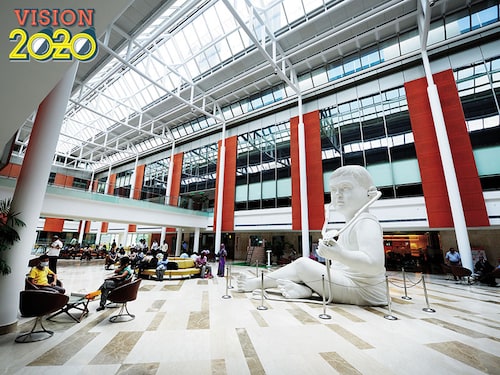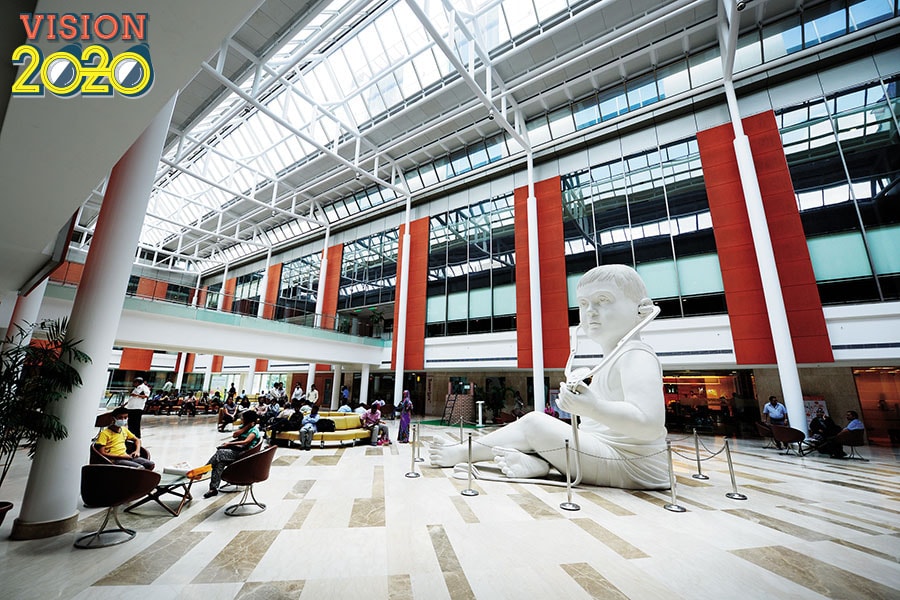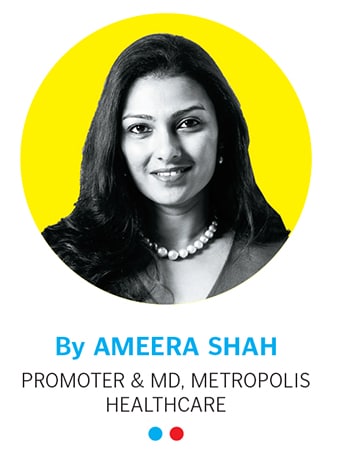'The patient today is much more empowered': Ameera Shah
Mobile health, telemedicine, and Internet of Medical Things have triggered customer-centric innovations, writes Shah, promoter of Metropolis Healthcare


 While many economic models have provided health cover to the masses, we are yet to implement one that’s scalable and replicated across regionsThe last ten years have seen extraordinary changes in India on multiple fronts. The health care system has been on an upswing, with the field of diagnostics especially impacted. Technological innovations and the entry of new private players propelled the sector’s rapid growth. The patient is today much more empowered, be it through self-monitoring of conditions like diabetes through handheld devices, or provision of home care for those grappling with chronic illnesses.
While many economic models have provided health cover to the masses, we are yet to implement one that’s scalable and replicated across regionsThe last ten years have seen extraordinary changes in India on multiple fronts. The health care system has been on an upswing, with the field of diagnostics especially impacted. Technological innovations and the entry of new private players propelled the sector’s rapid growth. The patient is today much more empowered, be it through self-monitoring of conditions like diabetes through handheld devices, or provision of home care for those grappling with chronic illnesses. The diagnostics sector is seeing rapid horizontal and vertical growth. More than 5,000 different kinds of tests are offered to patients today, up from a few hundred just a few years ago. Increasing competition has driven down costs, making diagnostics affordable to the masses. With increasing digitalisation and use of Big Data, pathology labs will transform into information hubs and key enablers of change. This is enhancing their transparency, visibility, control and accountability over business processes. Pathology labs are on their way to becoming the largest source of clinical data in the health care delivery model.
The diagnostics sector is seeing rapid horizontal and vertical growth. More than 5,000 different kinds of tests are offered to patients today, up from a few hundred just a few years ago. Increasing competition has driven down costs, making diagnostics affordable to the masses. With increasing digitalisation and use of Big Data, pathology labs will transform into information hubs and key enablers of change. This is enhancing their transparency, visibility, control and accountability over business processes. Pathology labs are on their way to becoming the largest source of clinical data in the health care delivery model.
A DECADE OF INNOVATION
Startups and private clinics have triggered customer-centric product innovations in health care, offering high-end diagnostics, maternity care, oncology care, senior day care, and other specialties to patients. Introduction of cutting-edge, small-scale pilot models related to mobile health (m-health), telemedicine and Internet of Medical Things (IoMT) are other significant developments on the innovation landscape. Digital ventures are now offering easy access to medical facilities via mobile apps. Many private and public hospitals have adopted online patient registration and service delivery systems. Due to the demand-supply mismatch, diagnostic chains, medical device manufacturers and hospital chains have been receiving significant backing from private equity and venture capital firms.
INSURANCE, AN UNTAPPED SEGMENT
Even among emerging markets, India is one of the least insured countries, with a health insurance penetration rate of only about 20 percent (according to a global report by Ernst & Young). Health insurance coverage will witness an upward trend in the coming decade driven by rising income, higher awareness on retail side and higher onset of group insurance schemes. Insurance schemes are now focusing more on preventive health care and wellness, thus enabling more customers to lead a health-conscious life.
There is an increasing emphasis from the government to reduce drug prices and make medicines more affordable. Some critical drugs for cancer treatment are now as much as 86 percent cheaper and prices of diabetes drugs are down by 42 percent compared to a few years ago. There is also the trend of doctors being encouraged to prescribe generic drugs instead of branded medicines to reduce out-of-pocket expenses of patients.
We are also observing tremendous efforts from the government of India to change its role in health care from that of a provider to an insurer. With the Union Budget 2017, it has pushed to make Aadhaar card an identifier for basic health services. Aadhaar has also been a critical step in identifying the beneficiaries of social health care insurance programmes being rolled out by the government.
In Union Budget 2018, the government gave a further push to the health care system by launching Ayushman Bharat, which provides insurance cover to about 10 crore families in India. This budget was also special because the health outlay for this financial year saw an increase of around 19 percent over the 2018-19 fiscal when it was ₹52,800 crore.
Why companies will have to fill digital skill gaps soon: Wipro"s Saurabh Govil
REGULATION, EMERGING TECHNOLOGIES
Be it hospitals, medical device manufacturers or pathology labs, there have been no unifying minimum standards or quality processes in place. This decade witnessed the national players self-regulate and achieve national and global accreditation as a testament to their quality. This was propelled by the growing awareness among patients and this trend will see an upswing going forward, forcing the industry to regulate and consolidate.
We envisage that over the next decade, the sector will witness a gradual integration of artificial intelligence at various stages. Multiple health care segments including diagnostics and hospitals will leverage data analytics and machine learning to disrupt their markets and deliver competitive edge. Technology is already helping hospitals and clinics to collect, store and share critical patient data. By adding an analytics layer to this, the care providers will be enabled to provide a much better analysis of the condition and recommendations to the patient.
"In jobs, expertise from experience is no longer critical"
A STEP CLOSER TO UNIVERSAL HEALTH CARE
Over the last decade, a multitude of economic models have been deployed to provide health care cover to the masses. However, we are yet to implement one that is scalable and can be replicated across regions. An ideal model would be one which is cost-effective, operationally efficient and delivers the desired outcome.
The need for affordable health care, rise in the incidence of lifestyle diseases, and the government’s conscious efforts towards the development of the health care sector are helping it stay on a growth trajectory. The deployment of biometrics through Aadhaar Cards and DigiLocker are some of the steps that are leading to quality health services.
We must, however, acknowledge that the right policy framework and infrastructure push are still required. Historically, health care has been treated as a social sector, coming far below in the list of priorities of the government, with meagre budget allocations.
Collaborative efforts between private health care providers and the government are the key to implementing the entire continuum of care to the masses, enhance patient experience and standardise measurable outcomes. The government is waking up to the fact that the health care sector can evolve into a key driver of economy both at the national and state level. It must create a robust regulatory and policy framework, focus on channelling more investments into these and enable the industry to drive down costs.
First Published: Jan 14, 2020, 11:46
Subscribe Now